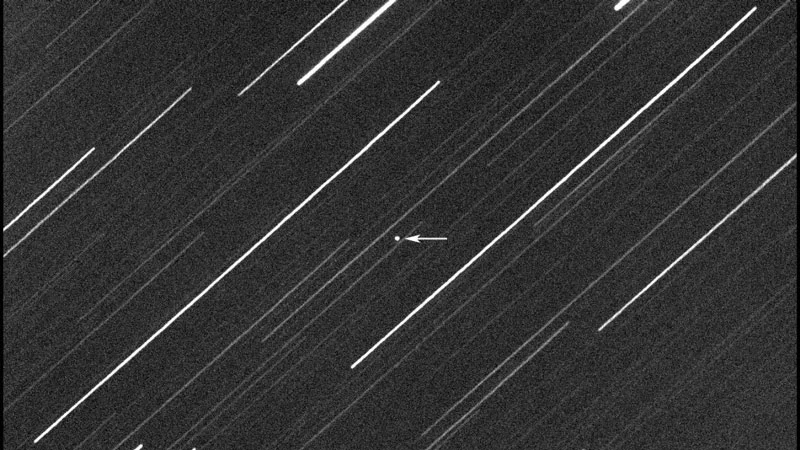A video has emerged showing the close pass of an asteroid
- January 28, 2023
- 0
Around 00:30 GMT on January 27, a rocky asteroid no more than 8 meters in diameter 2023 BU passed near Earth. This celestial body posed no threat even
Around 00:30 GMT on January 27, a rocky asteroid no more than 8 meters in diameter 2023 BU passed near Earth. This celestial body posed no threat even

Around 00:30 GMT on January 27, a rocky asteroid no more than 8 meters in diameter 2023 BU passed near Earth. This celestial body posed no threat even in a direct collision with our planet, but a bright fire show in the skies could make many impressions. For those who missed the asteroid transit and are far from telescopes, an Italian astronomy enthusiast has created a time-lapse video of Earth passing close by.
The video was created thanks to a robotic observatory on the outskirts of Rome. The observation was organized by Gianluca Masi. Robotic telescopes play an important role in detecting near-Earth objects that could potentially be dangerous to our planet. The flight of the asteroid was recorded by an amateur astronomer when the celestial body was 22,000 km from Earth and 37,000 km from the telescope.
Cloud cover prevented the 2023 BU image from being taken at the asteroid’s closest approach to Earth. However, since this celestial body is only 3.5 to 8.5 m in size, it is not possible for us to examine it in detail.
At maximum approach, the asteroid passed at a distance of 3,600 km from the Earth’s surface. Thus, not counting the ones that entered the atmosphere, it ranked fourth in the list of closest flying asteroids to us. But even if the 2023 asteroid THIS enters the atmosphere, it will burn almost completely, except for small fragments that will turn into meteorites.
In the videos and images presented, the asteroid 2023 BU appears as a bright little dot, while the bright lines surrounding it are stars. A tuned asteroid focus makes it steady in the video as the stars smudge. Regarding the Earth, let’s add that the asteroid flies at a speed of 33,800 km / h.
The asteroid’s passage through Earth’s gravity changed its orbit from nearly circular with a rotation period of 359 days to a long elliptical one with a period of 425 days. The discovered asteroid belonged to Gennady Borisov, a Crimean astronomer.
On the one hand, the suddenness of such a discovery makes us fear an unknown threat from outer space that we cannot resist. But on the other hand, almost all of the near-sun asteroids that are truly dangerous to Earth are known, and no new discovery has been made for a while. About 30,000 asteroids have been detected approaching Earth. Just over 2,200 are considered dangerous, and a dangerous asteroid from deep within the system seems highly unlikely.
Surprises cannot be ignored and most likely come from the Sun, which does not provide normal observations in this direction in the optical range, but that’s another story.
Source: Port Altele
John Wilkes is a seasoned journalist and author at Div Bracket. He specializes in covering trending news across a wide range of topics, from politics to entertainment and everything in between.